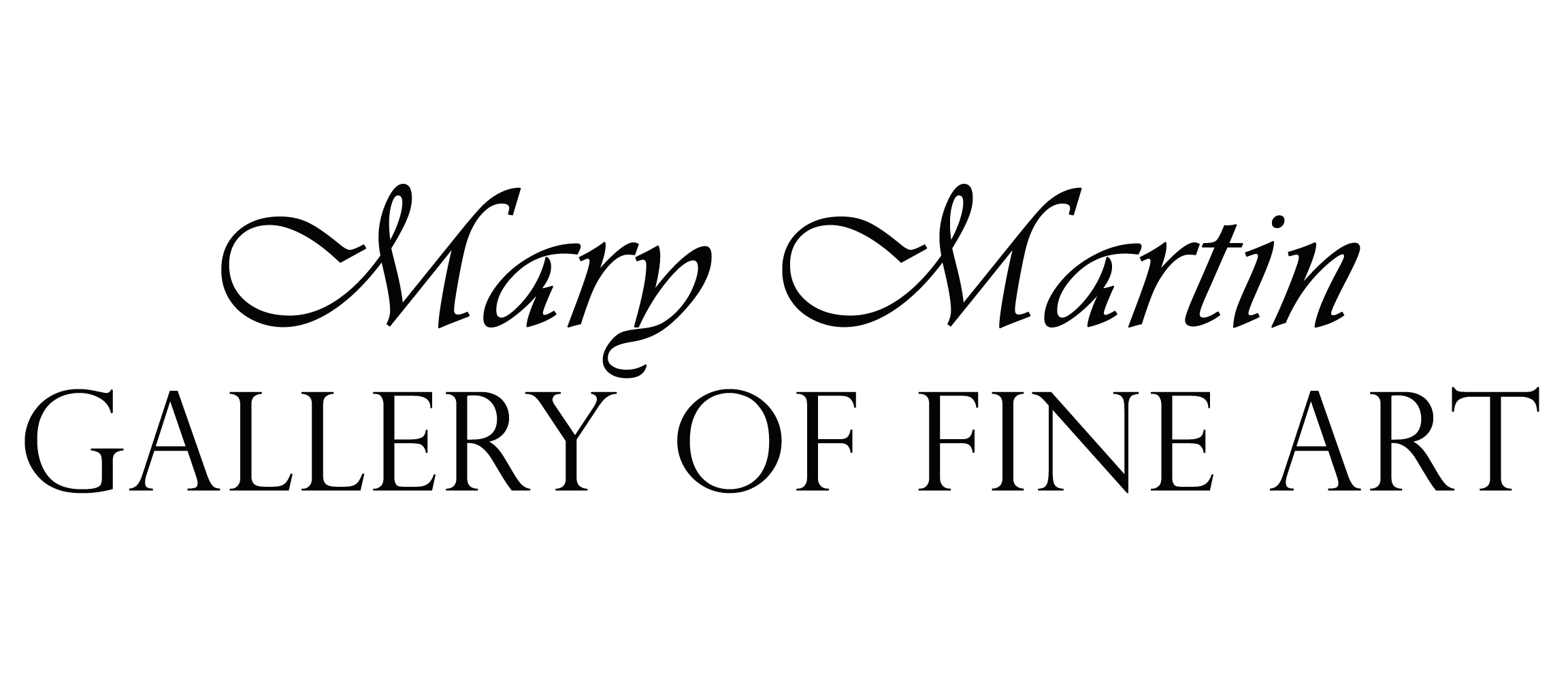Explore the captivating artwork available to you by Julia Klimova. "Beyond the Gaze: Portraits, Petals and Horizons" is rooted in presence and invites reflection. Set against contemporary backgrounds, these works explore the complexity of identity, vulnerability, and strength. The signature painting of the exhibition is “The Bloom Within”, a 48 x 48 oil on canvas portrait of a strong-willed, confident woman who holds direct eye contact with the viewer and invites us to a conversation with her eyes. The entire collection transports you to an oasis of serenity and introspection, making each work an unforgettable companion beyond the gallery wall.
Whether figurative, still-life, or abstract, Klimova’s work is influenced by her desire as an artist to root the viewer in the present moment and connect us with life’s inherent beauty. “What I hope to communicate in this exhibition is not a single message, but an invitation: to pause, to see, to feel. These works reflect my belief that art is a mirror for both strength and vulnerability, and that beauty - whether in a person, a flower, or a horizon - has the power to awaken something universal within us,” reflects Klimova.
Join us Friday, October 3rd, for the opening reception of "Beyond the Gaze: Portraits, Petals, & Horizons" at 143 East Bay Street, Charleston SC.
"Magenta Sunrise"
"Ruby Red"
"Golden Petals"
In the art exhibition "Beauty is in the Iris", Asya Baldwin brings vibrant iris flowers to life with oil on canvas. Trained in porcelain painting and influenced by classical realism, her work blends emotion, light, and color to offer a moment of joy and reflection. Each bloom emerges from a soft, dreamlike background, inviting viewers into a world of quiet beauty.
“In a world filled with challenges, it’s easy to overlook simple pleasures. Through vibrant color and delicate detail, I aim to bring a bit of joy, warmth, and beauty into everyday life. I’m thrilled to share my passion for bringing joy into people’s lives! In a world filled with challenges and drama, it’s easy to overlook the simple pleasures around us.” – Asya Baldwin
The exhibition begins Friday, August 1st, at 5 pm where the artist will be in attendance. 143 East Bay Street, Charleston SC
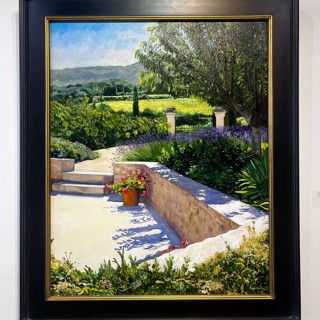
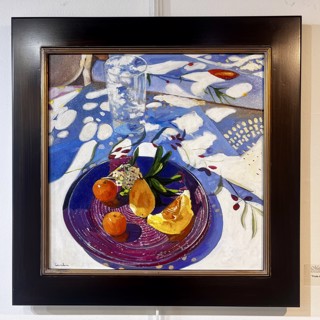
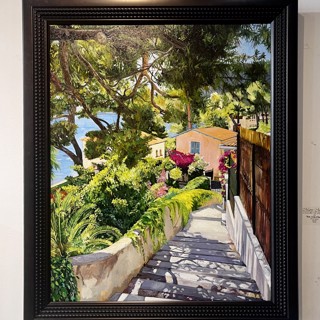
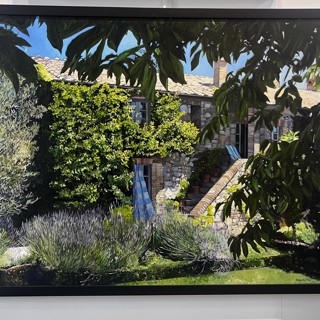
"The Shadow of Provence" explores Jean Paul Courchia's fascination with the dynamic of light and shadow. We invite you to experience the region's charming essence through his unique perspective, informed by both artistic intuition and scientific observation. For this exhibition, Courchia masterfully orchestrates the dance between light and shadow, revealing hidden depths and evoking a profound sense of serenity. His paintings are more than just views; they are immersive experiences that bathe you in warmth and invite quiet contemplation.
Jean Paul Couchia understands the vital role light plays – in revealing form, in creating contrast, and in evoking emotion. His canvases are not merely representations of landscapes; they are studies in the ephemeral nature of light, capturing fleeting moments as the sun moves across the Provençal terrain, casting long, dramatic shadows or bathing fields in a soft, golden glow.
Courchia states of his work, “art is, for me, a breath of life. With a paintbrush in my hands for the past fifty years, I have been able to live off my work for the past thirty years. Painting has allowed me to travel the globe, from my French home to the distant land of China.” He has his work in notable collections around the world including her Highness Queen Paola of Belgium, Mr. and Mrs. Shinomiya, General Consul of Japan in Marseille, and Mr. Aldon James, president of the National Arts Club in New-York.
Jean Paul Courchia’s exhibition “The Shadow of Provence” is featured in the gallery at 103 Broad Street, Charleston SC May 13 - June 13, 2025.
Telling a Story:
"Telling a story through portraiture art" means using the visual elements of a portrait, like facial expression, pose, clothing, and background details, to convey a narrative about the subject, going beyond just capturing their likeness and revealing deeper aspects of their life, personality, or experiences.
Body language and pose:
A confident posture, a slumped stance, or a hand gesture can reveal the subject's power dynamics, vulnerability, or state of mind.
Clothing and accessories:
The style and condition of clothing, jewelry, or other objects can indicate social status, occupation, or personal beliefs.
Background setting:
The environment depicted can provide context about the subject's life, like a rugged landscape for a wilderness explorer or a luxurious interior for a wealthy individual.
Color palette:
The choice of colors can evoke specific emotions or themes.
"Rules" to Portraiture:
1. The Rule of Thirds: Artists who create portraitures for a living typically divide the image into thirds to create a balanced composition onto their canvas
2. Facial Proportions: The eyes are usually halfway between the top of the head and the chin.
3. Composition: highlighting areas that reflect light is essential for artists capturing or creating a natural looking portrait. For instance, the tip of the nose and the middle of the nose bridge often reflect light.
4. Color Palette: warm vs. cool colors and when to use them. Warm colors can advance, while cool colors can recede.
5. Depth of Field: A shallow depth of field can help the artist blur the background and focus the viewer's attention onto the subject of the portrait.
Most Important Element of a Portrait:
In portraiture art, the eyes are often considered the most important element because they are considered the "window to the soul".
The eyes of the subject conveys emotions, personality, and inner life through their gaze, making the viewer feel a direct connection with the depicted person. When viewing a portrait, our attention naturally gravitates towards the eyes, making them the primary focal point that draws the viewer in.
Psychological impact: The way an artist depicts the eyes can significantly influence how the viewer perceives the subject's character and intentions.
Artistic technique: Artists often use techniques like highlighting, shading, and detail to emphasize the eyes and enhance their expressive power.
Oleg Trofimov & Mary Martin Gallery
"BETWEEN HEAVEN AND EARTH"
Splashing waves of Venetian canals, the stillness of a sun-soaked street during siesta, the vibrant atmosphere of small-town European streets and quaint corners of the world, are all subjects of the talented artist Oleg Trofimov as he conveys “BETWEEN HEAVEN AND EARTH” at Mary Martin Gallery of Fine Art.
The inspiration for internationally acclaimed artist, Oleg Trofimov’s paintings stems from his deep love of travel. “BETWEEN HEAVEN AND EARTH” showcases Trofimov’s unique ability and skill to capture not only the visual elements but also the sounds, sensations, and moods of the subject. The artist successfully aims to share special moments with the viewers, allowing them to experience the same emotions and memories.
Born in Krasnoarmeysk, Russia, Trofimov started drawing at age 5 in kindergarten. One drawing submitted in a competition received a special prize for its “humanitarian value.” In the years following Trofimov entered a children’s art school; and from 1986 to 1992 Trofimov studied the Moscow State University of Industrial Arts.
Trofimov’s preferred medium is oil and believes that it offers limitless potential to artists. “Throughout my artistic journey, I continually uncover new discoveries and techniques to master” states Trofimov. Comfortable creating artwork in all artistic genres, for this exhibit Trofimov introduced a level of abstraction to his well-known impressionistic representational style. “I wanted to emphasize the overall atmosphere of the paintings rather than focus on details”.
Now residing in the U.S., Trofimov spends his time traveling the world creating and capturing special moments and memories in paintings that have been exhibited in shows nationally and internationally. Oleg Trofimov is proud to have his paintings exhibited in museums and be part of private and major corporate art collections throughout the world.
Oleg Trofimov is represented by Mary Martin Galleries.
Mary Martin Gallery of Fine Art is proud to work with fine artists such as Tom Barnes, watercolorist extraordinaire. Barnes is widely recognized both nationally and internationally for his distinctive style figurative paintings. From 1972 until today, the subject of figures, expressions, attitudes and demeanors has been the focal point of Tom Barnes's work.
Barnes grew up in the pine forests and coastal plains of South Georgia. His first exposure to art was at the Telfair Academy of Art in Savannah, where he spent weeks visiting family during summer school breaks. Besides the yearly exposure to art, BARNES was also exposed to fashion design by the extremely elegant and fashion-conscious twins, Bess and Lila. The combination of art and fashion resulted in a life-long influence on the young Barnes and his artistic style.
Some are male, but Barnes's subjects are predominately women. “The subtext of each of my images is that women are captivating, capable, and have a strong presence. I represent them in their fashion statement and their postures” states Tom Barnes.
The most significant element is that they are looking back at the viewer intently, resulting in truly thought-provoking works of art created with watercolor on canvas, a technique which Barnes pioneered. Tom Barnes elongates his figures, an exaggeration of features that is often associated with Mannerism.
The movement started during the Renaissance when artists elongated their subjects to increase the sense of elegance and grace. El Greco, Reynolds, Modigliani are some of the masters of Mannerism. Adding to the elegance is a touch of gold! Barnes adds a touch of liquid 14kt gold to each painting.
Works of TOM BARNES can be found in residential and corporate art collections around the world.
Tom Barnes is represented by Mary Martin Galleries in Charleston, SC.
